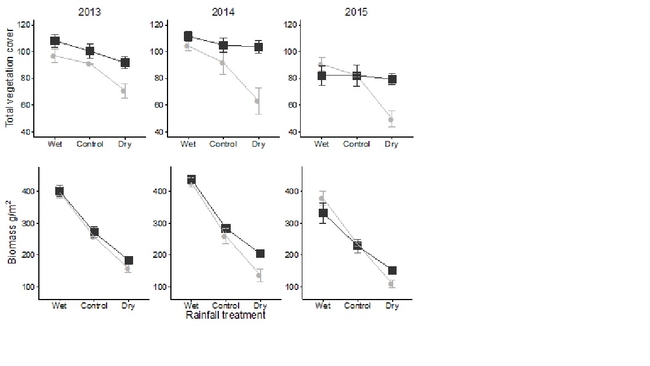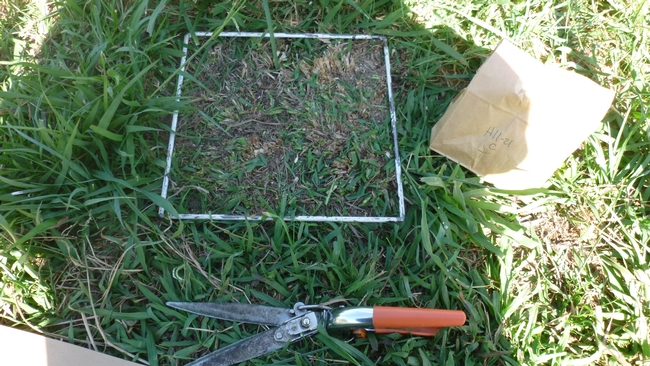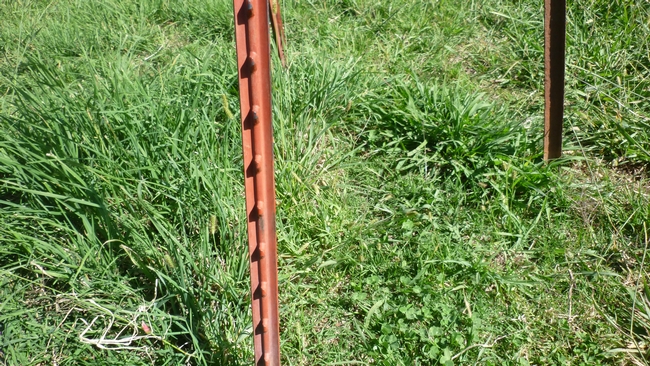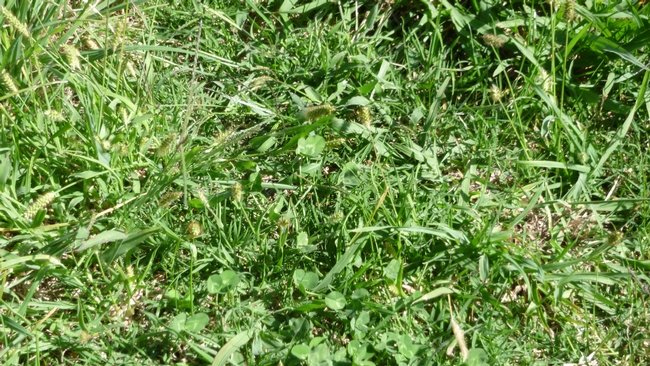- Author: Lauren Hallett
- Author: Katharine Suding
Over the last few years Californians have grappled with how to manage lands during times of both drought and plentiful rainfall. At SFREC and on Central Valley rangelands, one question is whether management that promotes high forage in wet years alters ecosystem resilience in dry years. For example, promoting highly productive grasses is a common goal. While drought years can negatively affect productive grasses, less productive species, particularly forbs like filaree, do relatively well in drought years due to decreased competition. Over the last several years the Suding lab and SFREC crew have been building ever-larger drought manipulations to test how different management practices, and associated species mixes, affect forage across good and bad rainfall years.
In the first iteration of this project, we looked at how grazing practices and rainfall interact to affect forage over dry and wet years. We hypothesized that grazing practices that maintained a diverse mix of grasses and forbs would promote more stable forage across wet and dry conditions. To test this, we first varied grazing intensity over four years within a pasture to describe how grazing alters grass and forb abundances (Figure 1a). Second, we implemented rainout shelters and irrigation over three years to create “dry” and “wet” plots within areas of different grazing histories (Figure 1b). We found that moderate grazing practices maintained a diverse mix of grass and forb species. This mixture better maintained vegetation cover and biomass across rainfall conditions compared to low-grazed areas dominated only by grasses (Figure 2) (Hallett, Stein, Suding conditionally accepted, Oecologia).
In the second iteration of this project, we are exploring how rainfall timing alters grassland diversity and forage production. We hypothesized that early-season drought will alter which species recruit that year, with higher forb abundance in dry falls and higher grass abundance in wet years, whereas late-season drought would reduce overall production. To test this, we have implemented large shelters with roofs that are pulled in place to create early-season, late-season and continuous drought as well as a control (Figure 3). We are finding that periodic early-season drought helps to maintain forb diversity in California rangelands. Working with Dr. Whendee Silver, we are also testing the effect of rainfall timing on nutrient cycling and greenhouse gas emissions. We are finding that previous-season rainfall as well as current season alters greenhouse gas emissions, which may be important for managing rangelands for multiple ecosystem services going into the future.
- Author: Nikolai Schweitzer
The Sierra Foothill Research and Extension Center in Browns Valley, CA utilizes 130 acres of summer irrigated pasture for cattle grazing. SFREC's irrigation water is supplied by a local water district via pipelines and open ditch distribution sources. The irrigation delivery system applies water through sprinklers, open ditches, and gated pipes. Each irrigated pasture at SFREC is managed for 1) Forage Production, 2) Water Quality, and 3) Soil Quality.
SFREC staff measures forage production in 15 enclosed cages throughout five different irrigated pastures. The treatments within each cage include leaving 4-6 inches of residual grass and measuring Total Forage Production (TFP). Guidelines for general irrigation and pasture management production based on past and current research recommend leaving 4 to 6 inches of residue/grass growth after each grazing period. The basis of this recommendation is to increase forage production (by leaving increased amounts of foliar surface area), improve root development, decrease weeds, cause less stress for forage grasses and increase water infiltration. Total Forage Production is measured by clipping the grass all the way to the ground. This center project is measuring the two treatments (4-6 inches & TFP) on their respective pounds/acre production. Each month (from April through October) forage is clipped from each cage, dried, and weighed (pounds/acre). After the samples are clipped, each enclosed area is leveled to its prescriptive treatment.
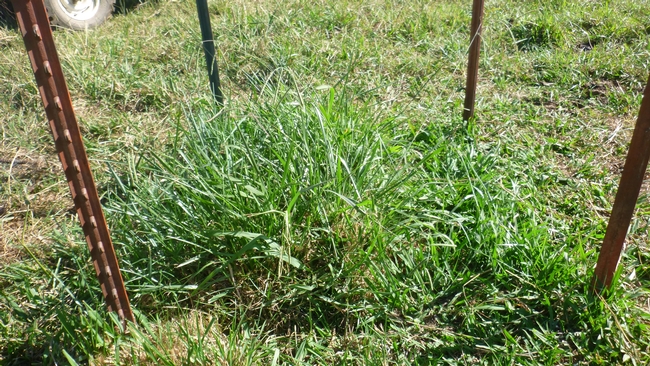
During the last two years of field sampling on irrigated pasture at SFREC, there was an increase in forage diversity in the Total Forage Production subplot. Clovers, birdsfoot trefoil, and filaree became increasingly abundant due to the increased sunlight and less crowding from competitive grasses. While the increase in clover and other forbes growth lends to an increase in forage quality, there is an overall decrease in forage production per acre in the TFP treatments when compared to the treatments with 4-6 inches of residual grass.
Numerous other factors can potentially impact irrigated pasture forage growth. Fertilization (rates, composition, timing), irrigation (frequency, amount, duration), grazing (stocking density, class/age of animal), species composition, physical structures (water location, loafing areas, rubbing zones, mineral location), soil properties, aspect, and slope, are other important components to manage or consider.



